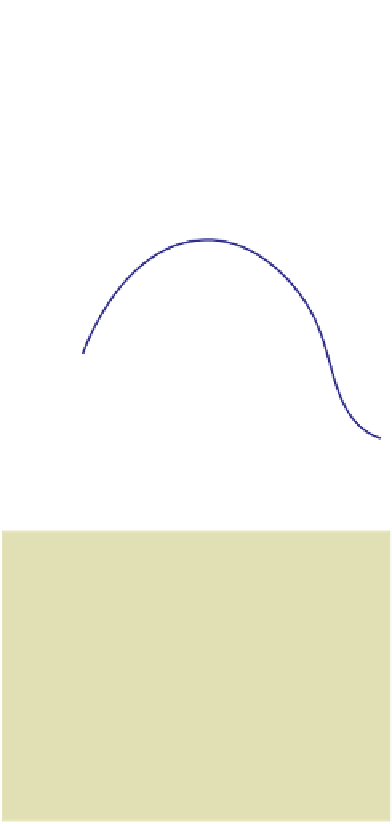Biology Reference
In-Depth Information
The exact outcome depends on the
shape of the curve in Fig. 6.19, and it is
possible to draw fitness curves which
will result in a stable optimal group size
(Giraldeau & Gillis, 1985).
The general point from Sibly's model
is that unless groups of optimal size
can prevent further newcomers from
settling, groups in nature will often be
larger than the optimum because it will
pay individuals to join groups until a
stable distribution is achieved.
Individual differences
in a group
Skew Theory
Fig. 6.19 considers average individual
fitness in groups of different sizes.
However, in most groups there will be
individual differences in the net benefit
from group living. In foraging flocks, for
example, individuals at the front of the
group may do better than those at the
back (Major, 1978), and when a
predator arrives individuals who can get
to the centre of the group will be safer
than those at the edge. Often older,
larger or more experienced individuals
will commandeer the best positions and force others to settle for poorer places in the
group. In theory, subordinate individuals will put up with lower pay-offs so long as they
could not do better by moving elsewhere. This idea forms the basis of what has come to
be known as 'skew theory' (Vehrencamp, 1983).
Skew models consider the effects of group size on individual reproductive success,
which will be the outcome of all the potential costs and benefits of group living,
including foraging and protection from predators. One possibility is that dominant
individuals have complete control of reproduction in the group. In this case, if a
subordinate tries to take too great a share of the reproduction, to the detriment of the
dominant, then the dominant can do something about it, such as evict the subordinate
from the group. As a consequence, subordinates may restrain their reproduction to
avoid eviction by the dominant. Alternatively, if dominants do not have complete
control, there may be 'tug of war' conflicts over reproductive shares.
This is a topic where empirical studies have lagged behind a proliferation of theoretical
models (Keller & Reeve, 1994; Reeve, 2000; Johnstone, 2000; Kokko, 2003). We shall
consider two studies of how grouping is maintained despite a skew in benefits within
the group.
1
7
14
Group size
Fig. 6.19
Optimal group sizes may not
be stable. In this example individual fitness
is maximal at a group size of seven, but a
new arrival would do better to join this
group than to be solitary because
individual fitness in a group of eight is
higher than in a group of one. Further
individuals should continue to join until the
group size is 14. Only after this would the
next newcomer do better alone. After
Sibly (1983). With permission from Elsevier.
Individual
differences in
benefits: who is in
control of skew?



































